Want to say Happy Birthday in Korean like a native? As an English teacher for Korean students in the Philippines, I've celebrated countless birthdays and learned that these greetings are key to understanding Korean culture.
In this guide, I'll share six Korean birthday wishes I've learned through daily interactions with my students and Korean colleagues. From casual expressions used in classrooms to formal greetings exchanged at official events, you'll learn Korean expressions that are actually used by native speakers.
Happy Birthday in Punjabi
Happy Birthday in Japanese
Happy Birthday in Arabic

How To Say Happy Birthday In Korean?
In Korean, saying "Happy Birthday" isn't one-size-fits-all. The phrase you choose depends entirely on your relationship with the birthday person. And to be honest? This social awareness is crucial in Korean culture!
Below, I'll guide you through various "Happy Birthday" expressions, from the most formal to the casual. These are arranged by formality level, reflecting real-world usage I've observed. Remember, when in doubt, opt for the more formal version - it's a safe bet that's saved me from social missteps more than once!
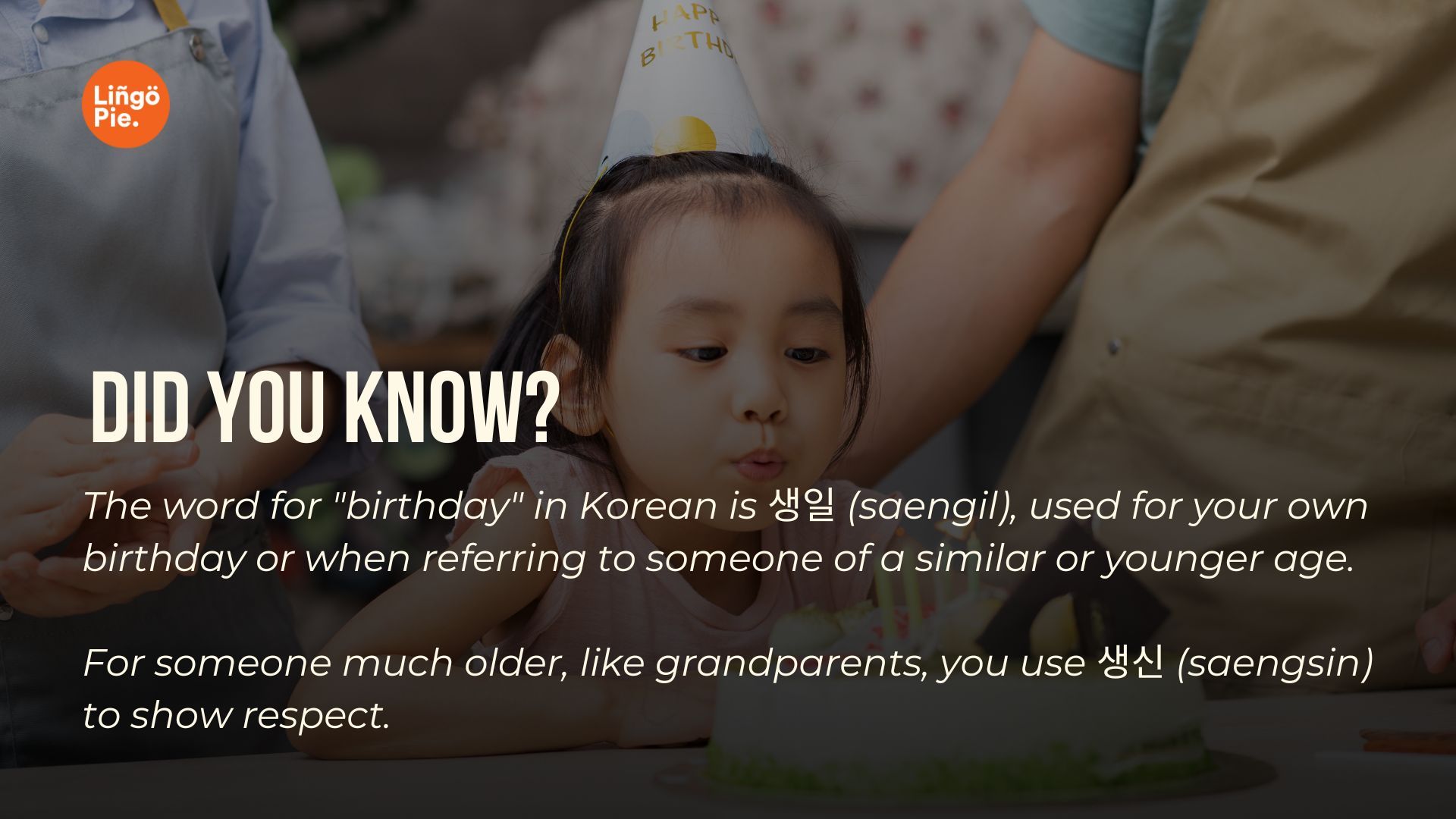
생신 축하드립니다 - Saengsin chukadeurimnida
생신 축하드립니다 (Saengil chuka deurimnida) is the most formal way to say Happy Birthday in Korean. This expression uses the Korean honorific 생신 (saengsin) for "birthday" instead of the more common 생일 (saengil), showcasing extra respect.
I've primarily used this phrase when addressing older Korean colleagues or my students' grandparents at school events. It's the safest choice when you're unsure about the appropriate level of formality, especially with seniors or in professional settings.
생일 축하 드려요 - Saengil chukha deuryeoyo
생일 축하 드려요 (Saengil chukha deuryeoyo) is a polite yet slightly less formal way to say "Happy Birthday" in Korean. I often use this phrase with my students' parents or younger Korean teachers at our school. It strikes a perfect balance between respect and friendliness, making it ideal for professional relationships or acquaintances you're not extremely close to.
This expression uses the standard term 생일 (saengil) for "birthday", but maintains formality with the honorific Korean verb ending 드려요 (deuryeoyo). In my experience, this phrase is well-received by middle-aged Koreans and is appropriate in most social situations where you want to show respect without seeming overly distant.
생신 축하드려요 - Saengsin chukhadeulyeoyo
This expression retains the honorific term 생신 (saengsin) for "birthday", but uses the softer ending 드려요 (deulyeoyo) instead of 드립니다 (deurimnida). In my experience, this subtle shift can make your greeting feel warmer while still showing proper respect.
It's perfect for situations where you want to acknowledge your relationship with the person while maintaining appropriate formality.
생일 축하합니다 - Saengil chukahamnida
This expression is ubiquitous in Korean culture - you'll hear it in birthday songs and see it on cards. I've found it to be a safe choice in professional settings or when unsure about the appropriate level of formality. Interestingly, 축하합니다 (chukahamnida) on its own can be used to congratulate someone on any achievement, making it a practical phrase to know beyond just birthdays.
생일 축하해요 - Saengil chukahaeyo
생일 축하해요 (Saengil chukahaeyo) is a friendly yet still polite way to say "Happy Birthday" in Korean. From my experience, it's well-received by most Koreans, regardless of age, as long as you're not in a highly formal setting. And to be honest? It's become my go-to phrase for most birthday situations, as it rarely feels out of place.
생일 축하해 -Saengil chukahae
생일 축하해 (Saengil chukahae) is the casual, friendly way to say "Happy Birthday" in Korean. You see, what makes this greeting unique is that it drops the polite ending 요 (yo), making it much more intimate. This is why I highly recommend using it only with your close Korean friends.
생축 - Seng-chook
생축 (Seng-chook) is the ultra-casual, slang way to say "Happy Birthday" in Korean. I first encountered this abbreviation in Kakao text messages from my younger Korean students and initially thought it was a typo! It's essentially the Korean equivalent of "HBD" in English.
From my observations, it's exclusively used among close friends or in very informal online interactions. So my advice? Be careful with this Korean slang - using it with the wrong person could come across as disrespectful or overly familiar.
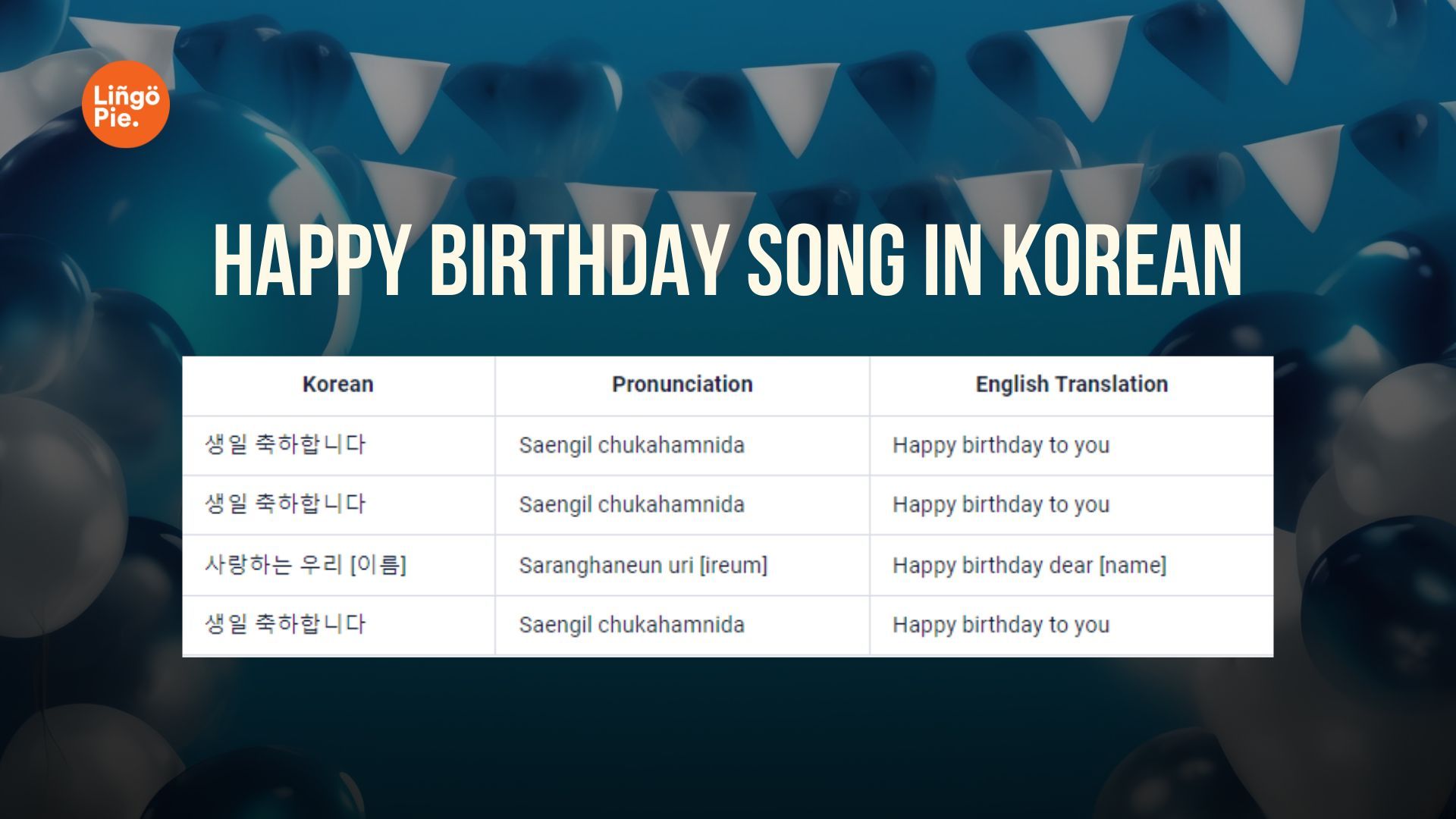
Happy Birthday Song In Korean Language
Singing "Happy Birthday" in Korean is an essential skill if you're ever invited to a Korean birthday party. The good news? Well, the melody is identical to the English version, making it easy to learn!
Here's a breakdown of the Korean birthday song lyrics, along with their pronunciations and English translations:
| Korean | Pronunciation | English Translation |
|---|---|---|
| 생일 축하합니다 | Saengil chukahamnida | Happy birthday to you |
| 생일 축하합니다 | Saengil chukahamnida | Happy birthday to you |
| 사랑하는 우리 [이름] | Saranghaneun uri [ireum] | Happy birthday dear [name] |
| 생일 축하합니다 | Saengil chukahamnida | Happy birthday to you |
Remember to replace [이름] (ireum) with the birthday person's name when singing. Koreans typically clap along while singing, and it's common to sing the song twice - once in Korean and once in English.
How Do Koreans Celebrate Birthdays?
Want to know what makes Korean birthdays extra special? It's not just about cake and candles! Korean birthdays are a whole different ball game. From how they count age to the big birthday bashes, there's a lot to discover.
Read on below as I spill the beans on everything you need to know!
Korean Age
In Korea, everyone gains a year of age on New Year's Day, regardless of their actual birthday, leading to a collective aging process that differs from international norms.
Imagine twins born on December 31st. Internationally, they're newborns as the year turns. But in Korea, they'd be considered two years old on January 1st, just a day later.
100-Day Celebration (Baek-il – 백일)
The 100-Day Celebration, known as Baek-il (백일) in Korean, is a significant milestone in a baby's life, traditionally marking their survival through the most vulnerable early months. This custom dates back to times when infant mortality rates were high, and reaching 100 days was seen as a promising sign for the child's future health and longevity.
During Baek-il, families typically prepare a special feast featuring white rice cakes (baekseolgi) and other symbolic foods. The color white represents purity and a bright future. Relatives and friends are invited to celebrate, often bringing gifts for the baby.
While modernization has reduced its prevalence, many Korean families still observe this tradition, viewing it as an important cultural event and an opportunity to introduce the baby to the wider family and community.
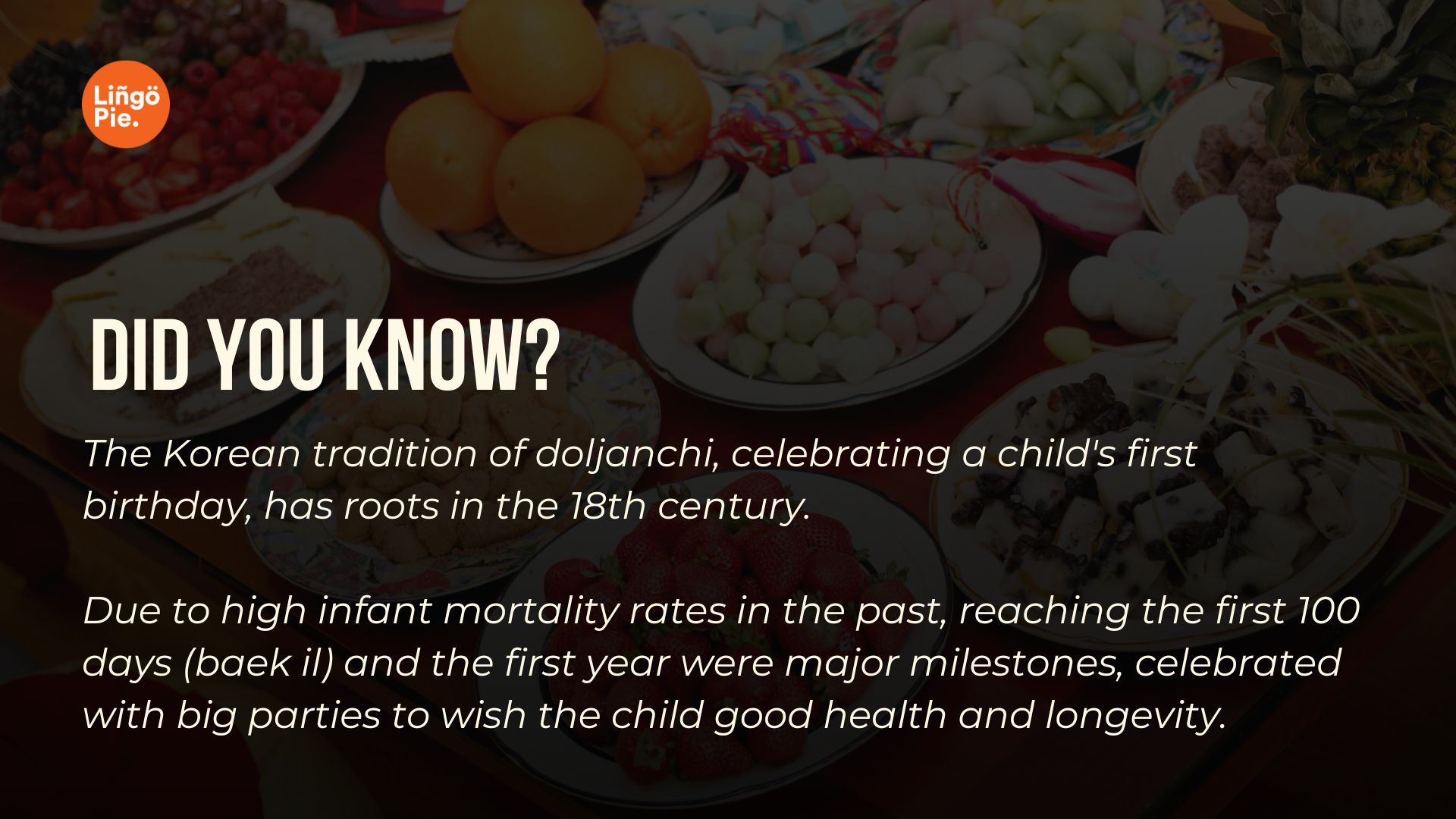
1-Year Birthday (Dol – 돌)
A baby's first birthday is a HUGE deal in Korea! It's called a Dol, and they throw a super fun party called a doljanchi. Imagine a party with colorful stuff everywhere, the baby in a fancy outfit, and a super cool game called doljabi. That's where the baby gets to pick an item that's supposed to tell their future! Like, if they grab a pen, maybe they'll be a writer. It's pretty wild!
60th Birthday (Hwangap – 환갑)
Hwangap marks the completion of a 60-year zodiac cycle. Traditionally seen as a major life milestone, it's still celebrated as a family event. This birthday celebration often involves traditional clothing and food.
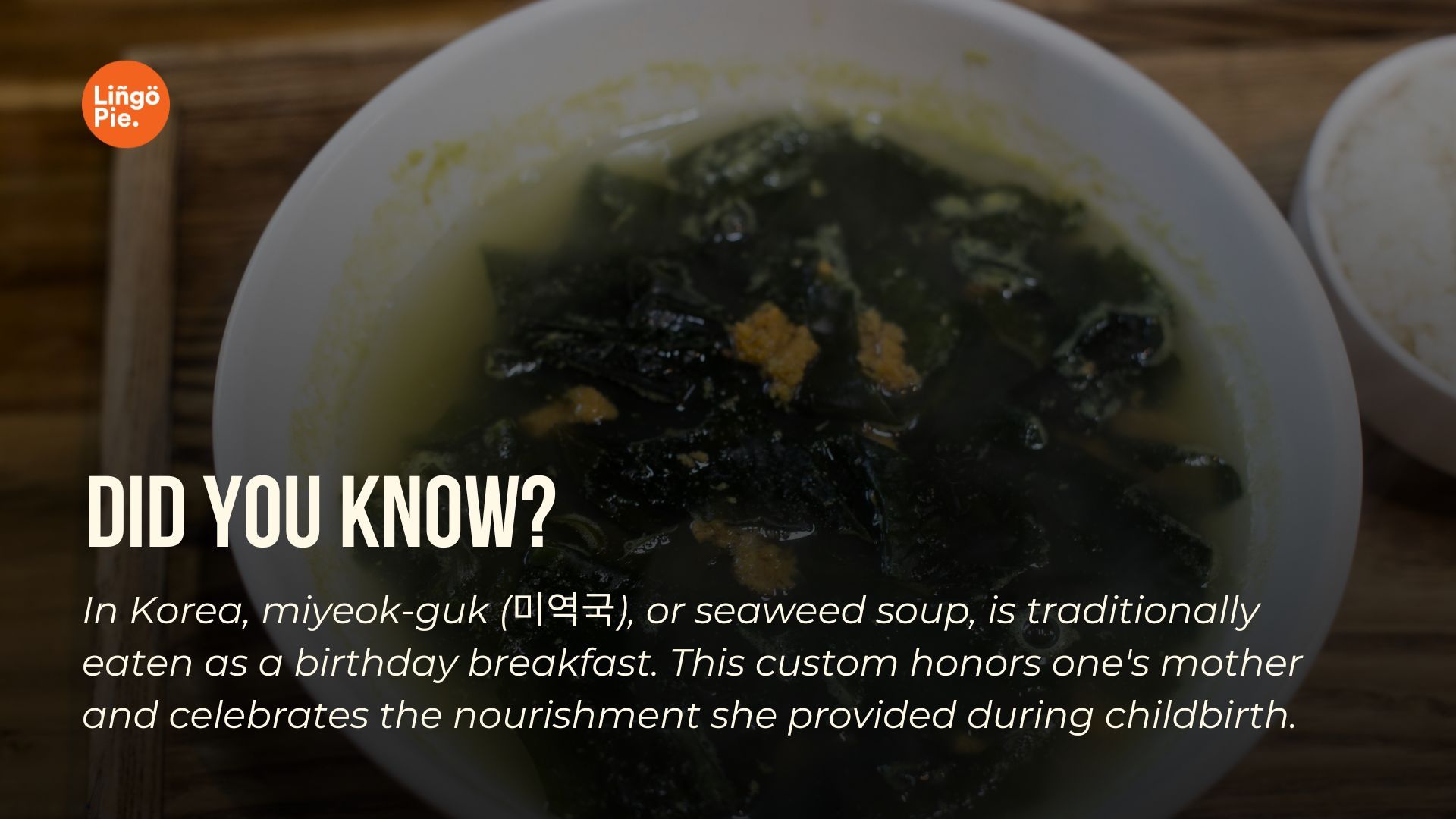
Korean Birthday Food
Food is a central part of Korean culture, and birthdays are no exception. While Western-style cakes and candles have gained popularity, traditional Korean birthday foods hold deep cultural significance. Let's dive in!
| Dish | Meaning or Significance |
|---|---|
| Miyeok-guk (Seaweed Soup) | This is the quintessential Korean birthday food. It's believed to help with recovery after childbirth, and the tradition of eating it on birthdays has continued. |
| Samgyetang (Ginseng Chicken Soup) | Often enjoyed on birthdays, especially for older generations. The ginseng is believed to boost health and longevity. |
| Bibimbap | This colorful rice dish is a popular choice for birthday celebrations due to its versatility and ability to cater to various tastes. |
| Jeon (Korean Pancakes) | These savory pancakes, often made with seafood or kimchi, are a festive addition to any Korean gathering, including birthdays. |
| Korean BBQ | A communal and celebratory meal, Korean BBQ is increasingly popular as a birthday feast, allowing for shared cooking and enjoyment. |
| Tteok (Rice Cakes) | These sweet or savory treats are often served at Korean celebrations, including birthdays, and come in various shapes and flavors. |
Remember, while these are common choices, birthday menus can vary depending on the region, family traditions, and personal preferences.
Korean Words Related to Birthdays
Learning vocabulary related to birthdays is a great way to expand your Korean language skills and connect with the culture. Here are some essential Korean words and phrases that you might find useful when talking about birthdays.
| Korean Script | Romanized | English Translation |
|---|---|---|
| 생일 | saeng-il | Birthday |
| 생일 축하합니다 | saeng-il chugha-hamnida | Happy Birthday |
| 생일 파티 | saeng-il pati | Birthday Party |
| 생일 선물 | saeng-il seonmul | Birthday Present |
| 케이크 | ke-ik | Cake |
| 초 | cho | Candle |
| 촛불 | chopbul | Candlelight |
| 선물 | seonmul | Gift |
| 카드 | kadeu | Card |
| 축하 카드 | chugha kadeu | Greeting Card |
| 축하 | chugha | Celebration |
| 파티 | pati | Party |
| 풍선 | pungseon | Balloon |
| 노래 | norae | Song |
| 생일 노래 | saeng-il norae | Birthday Song |
| 소원 | sowon | Wish |
| 축하해요 | chugha haeyo | Congratulations (informal) |
| 나이 | nai | Age |
| 연령 | yeonryeong | Age (formal) |
| 특별한 날 | teukbyeolhan nal | Special Day |
| 친구 | chingu | Friend |
| 가족 | gajok | Family |
| 장수 | jangsu | Longevity |
| 번영 | beonyeong | Prosperity |
| 기념일 | ginyeomil | Anniversary |
These words and phrases will help you celebrate birthdays in Korean and understand more about Korean culture. Whether you're attending a birthday party or just wishing someone a happy birthday, these terms will come in handy.
Go Beyond Korean Birthday Greetings With Lingopie
We've just scratched the surface of Korean birthday traditions, but why stop there? Wow your friends and improve your language skills more with Lingopie!
Lingopie is a language learners' tool for mastering Korean and other foreign languages. Its secret? The amazing roster of language learning features is guaranteed to make you pick up new words effortlessly, polish your pronunciation, and understand Korean culture through everyday phrases.
Start your Korean adventure today - your favorite shows are waiting to become your best language teachers!
FAQ for Saying "Happy Birthday" in Korean
1. How do you say "Happy Birthday" in Korean?
In Korean, you can say "Happy Birthday" as "생일 축하합니다" (saeng-il chukha-hamnida) for a formal expression or "생일 축하해" (saeng-il chukha-hae) for an informal expression.
2. What is the difference between 생일 (saengil) and 생신 (saengsin)?
"생일" (saengil) is used for your own birthday or when referring to the birthday of someone of a similar or younger age. "생신" (saengsin) is a respectful term used for the birthdays of older individuals, such as grandparents or elders.
3. Are there any traditional foods associated with Korean birthdays?
Yes, a traditional food associated with Korean birthdays is 미역국 (miyeok-guk), or seaweed soup. It is commonly eaten for breakfast on one's birthday to honor one's mother and as a postnatal food.
4. What is a doljanchi?
Doljanchi is a traditional Korean celebration for a child's first birthday. This significant milestone is celebrated with a big party, as historically, reaching the first birthday was a major achievement due to high infant mortality rates.
5. What are some common birthday customs in Korea?
In Korea, it is customary to receive and give birthday gifts, enjoy a birthday meal with family and friends, and eat seaweed soup. Celebrations often include cake and candles, similar to Western traditions.
6. How do you write "Happy Birthday" in Hangul?
"Happy Birthday" is written in Hangul as "생일 축하합니다" for the formal version and "생일 축하해" for the informal version.
7. Can you use "saeng-il chukha-hamnida" in all birthday situations?
"Saeng-il chukha-hamnida" is formal and appropriate in most situations, especially when addressing someone older or in a formal setting. For friends or younger individuals, "saeng-il chukha-hae" can be used.





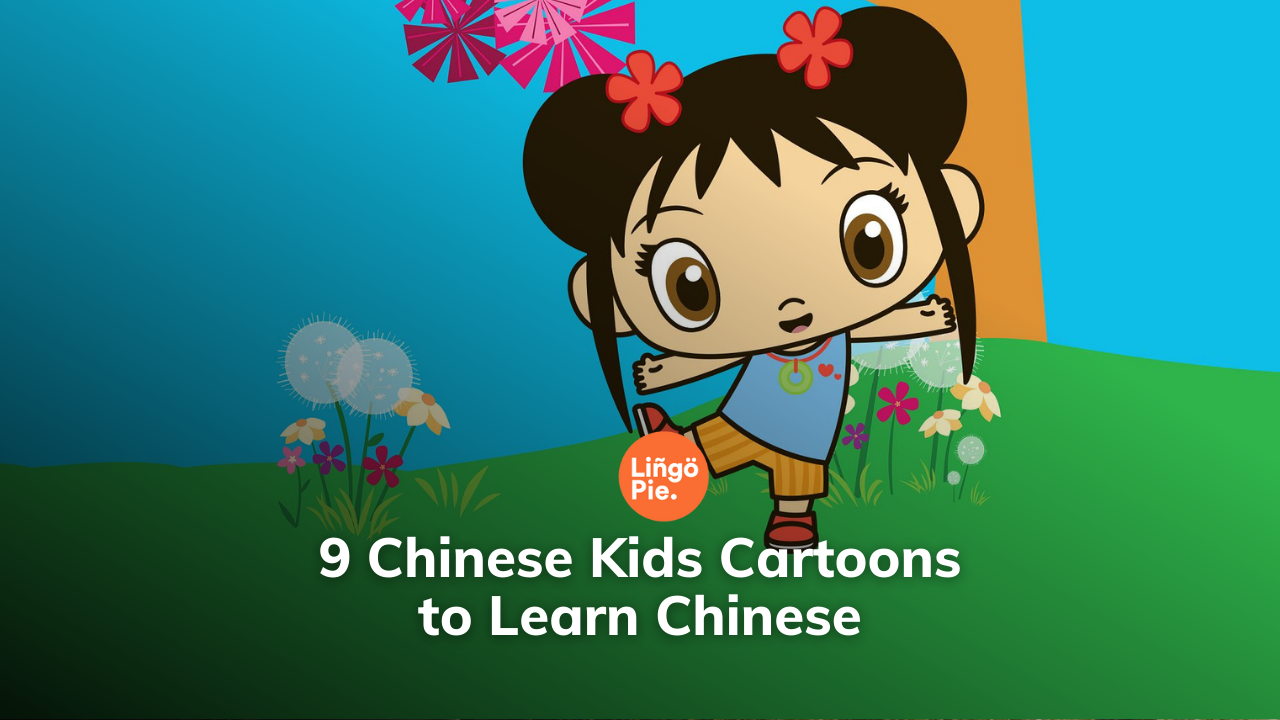
![11+ Best Shows On Netflix To Learn Korean [2025]](/blog/content/images/size/w300/2025/05/Best-Shows-On-Netflix-To-Learn-Korean.jpg)


